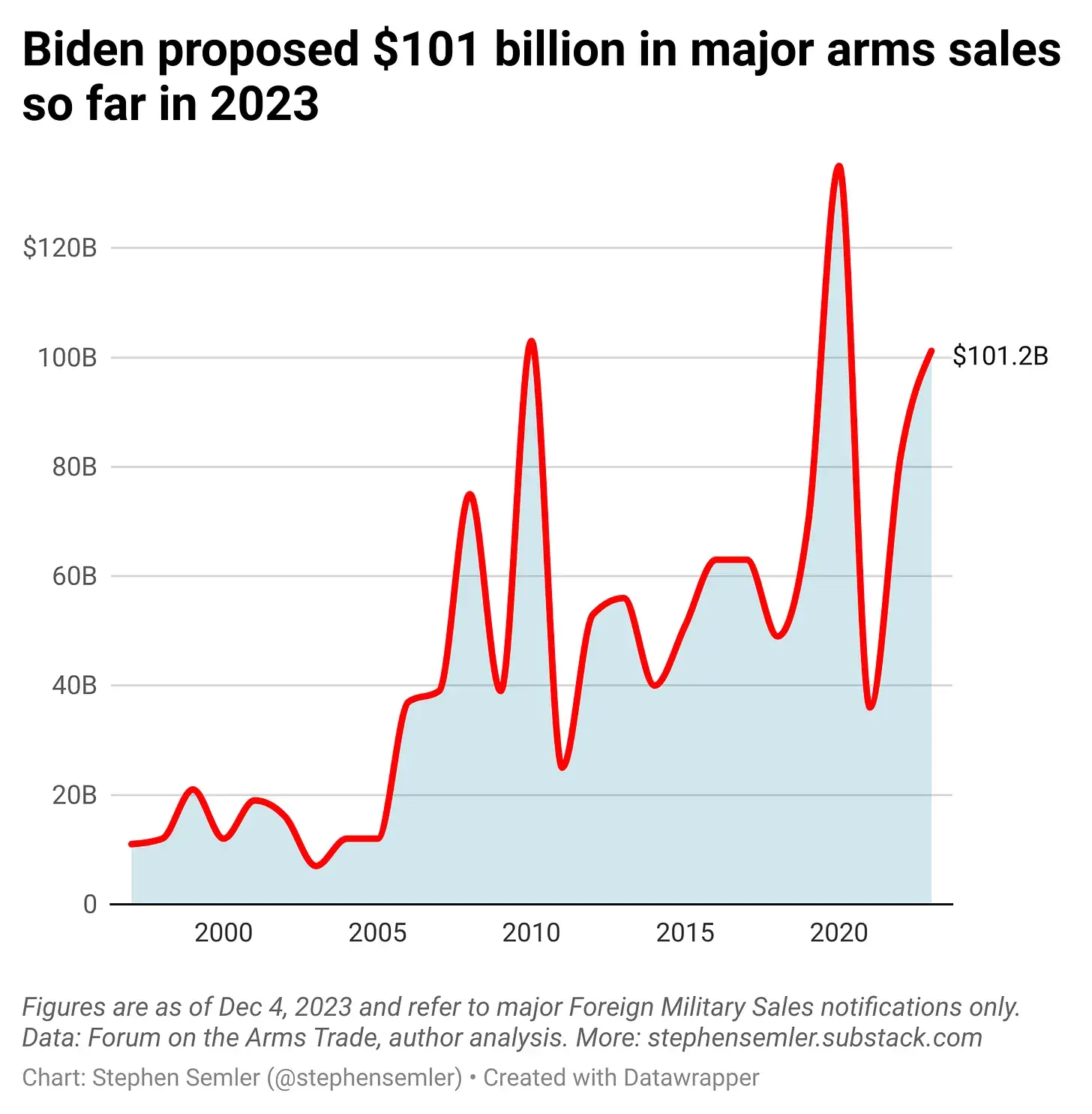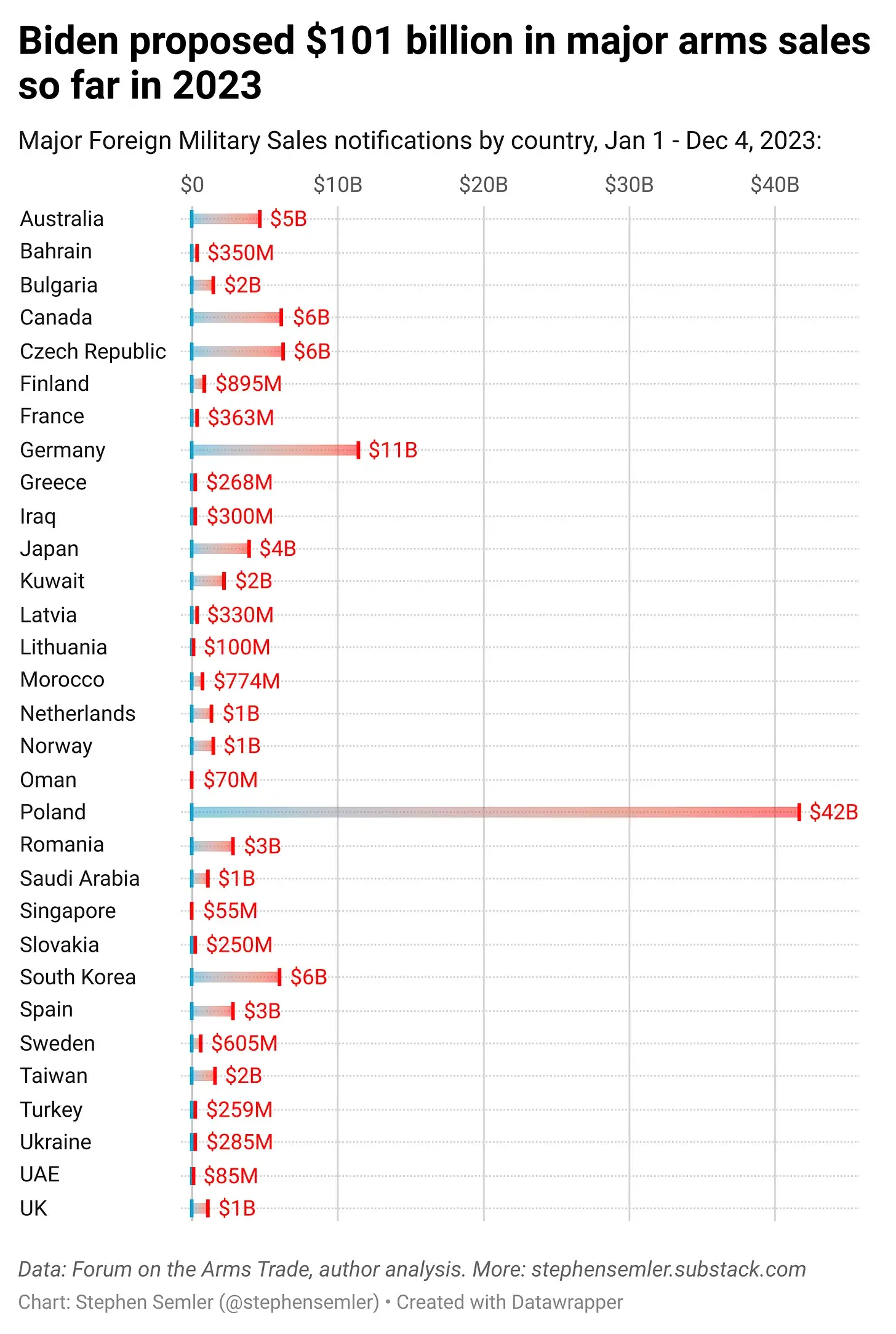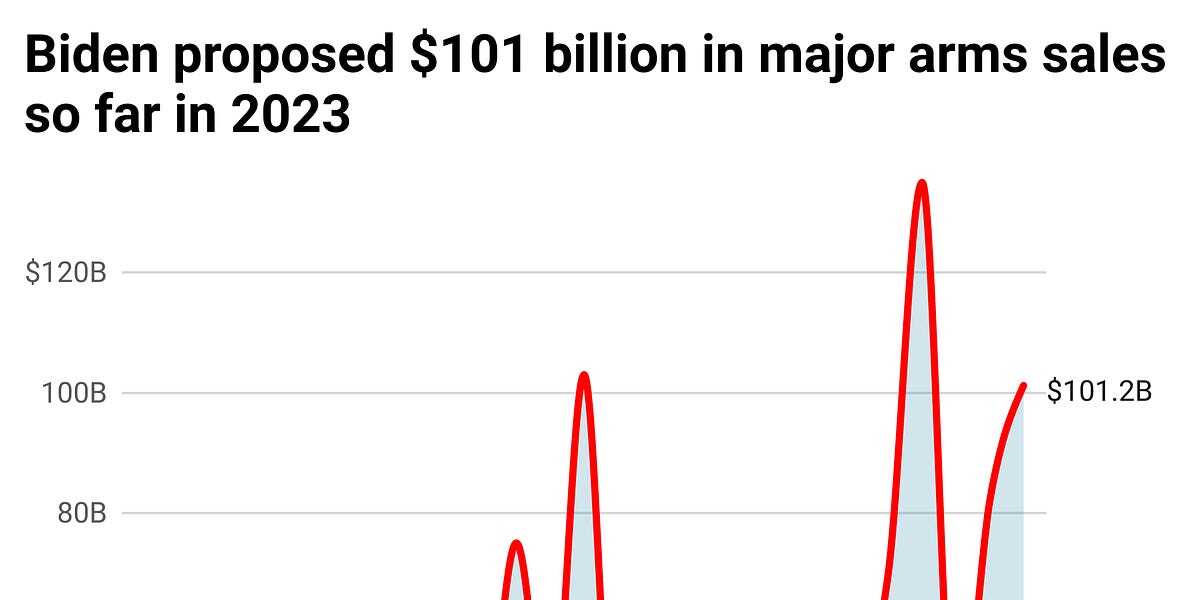Situation
The UAW represents 400,000 workers in the US and more than 580,000 retired workers. This month, the union officially called for a ceasefire in Gaza and announced that its board will “explore how we can have a just transition for US workers from war to peace.” Calling for a ceasefire and economic conversion (transitioning public funds from the war economy to productive sectors of the broader economy) are both pro-peace gestures with considerable popular support.
Meanwhile, Joe Biden still refuses to call for a ceasefire. What’s more, he’s leaning further into the war economy rather than looking for ways to transition out of it: Biden is now marketing his $106 foreign aid plan primarily as an economic boon rather than an investment in national security. In addition to supplemental military spending, Biden’s regular or ‘base’ military budget is another sign that militarism is the predominant theme in Biden’s industrial policy. But what about arms sales?
Major US arms sales notifications so far in 2023
Based on data from the Forum on the Arms Trade, the Biden administration has approved more than $101 billion in major arms sales so far this year. This is a staggering amount, but it’s only a preview of what 2023’s final tally will come out to (and not just because this year isn’t over yet).
The first reason is that this figure only includes major arms sales notifications. Section 36 of the US Arms Export Control Act requires congressional notification for arms sales (giving Congress a small amount of time to object to a sale), but only when proposed sales are expected to meet or exceed a certain value, and how high that notification threshold is depends on the recipient and the type of matériel. I’m embarrassed to admit that I can recite the following technical details from memory: For “major defense equipment” the threshold is $14 million or more; for any other military articles and services it’s $50 million, and for military construction services it’s $200 million. But for NATO recipients — along with South Korea, Australia, New Zealand, Japan, and Israel — the notification thresholds are $25 million, $100 million, and $300 million, respectively.1 As you probably guessed, this spares a lot of arms exports from scrutiny — the value of “under threshold” sales is reportedly in the tens of billions of dollars.
The second reason is that the $101 billion figure only includes arms exports through the Foreign Military Sales program and not Direct Commercial Sales. DCS transfers still require government approval, but they aren’t government-brokered like FMS cases are — they’re negotiated directly between a US company and a non-US country. Far more weapons sales occur through DCS licenses than the FMS program: In fiscal year 2022, total US arms sales reached $206 billion, breaking the Trump-era high. About $154 billion of that — 75 percent — was through DCS, only 2 percent higher than the average annual share of commercial arms sales from 2016-2022.
Two charts below

Biden proposed $101 billion in major arms sales so far in 2023. This line chart displays a red line representing annual major foreign military sales. Significant peaks occurred in 2010, 2020, and 2023. So far in 2023, the total is $101.2 billion. Figures are as of December 4, 2023 and refer to major Foreign Military Sales notifications only. Data: Forum on the Arms Trade, author analysis.

Biden proposed $101 billion in major arms sales so far in 2023. Major foreign military sales notifications by country, January 1 through December 4, 2023. This chart shows recipients of major U.S. arms sales so far in 2023. Here they are in billions of dollars: Australia, 5; Bahrain, .35; Bulgaria 6; Czech Republic, 6; Finland, .895; France, .363; Germany, 11; Greece, .268; Iraq, .3; Japan, 4; Kuwait, 2; Latvia, .33; Lithuania, .1; Morocco, .774; Netherlands, 1; Norway, 1; Oman, .07; Poland, 42; Romania, 3; Saudi Arabia, 1; Singapore, .055; Slovakia, .25; South Korea, 6; Spain, 3; Sweden, .605; Taiwan, 2; Turkey, .259; Ukraine, .285; United Arab Emirates, .085; United Kingdom, 1. Data: Forum on the Arms Trade, author analysis.



Why did you frame this data discussing Israel? Almost all of these deals were to support Ukraine’s defense via Poland.